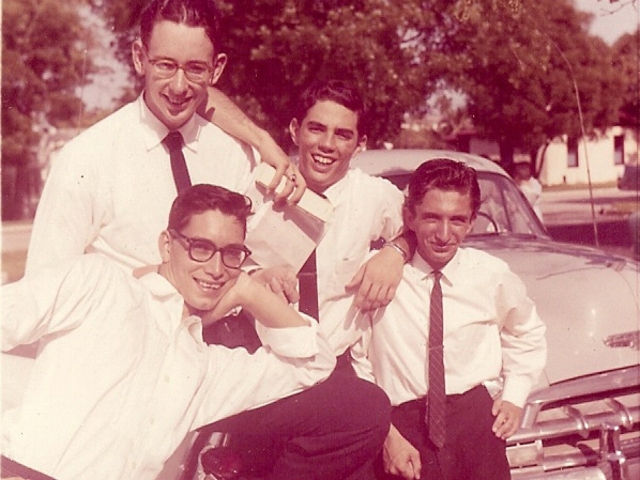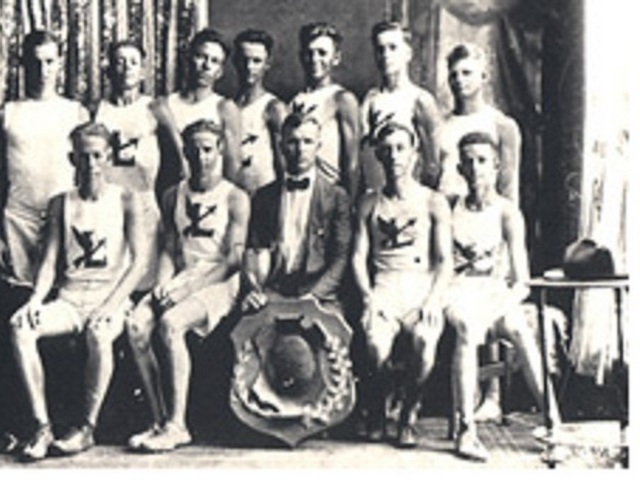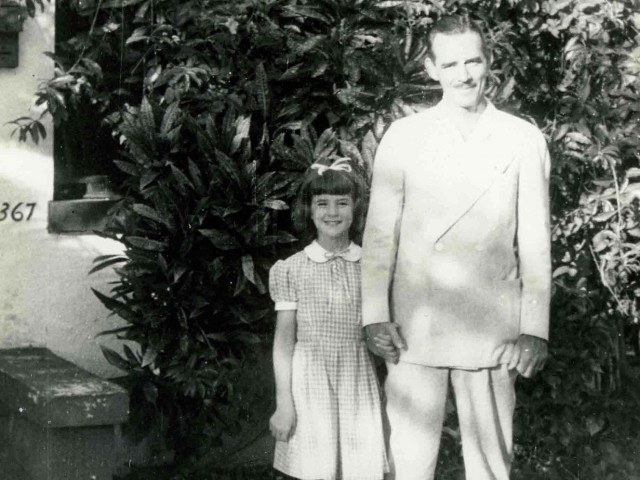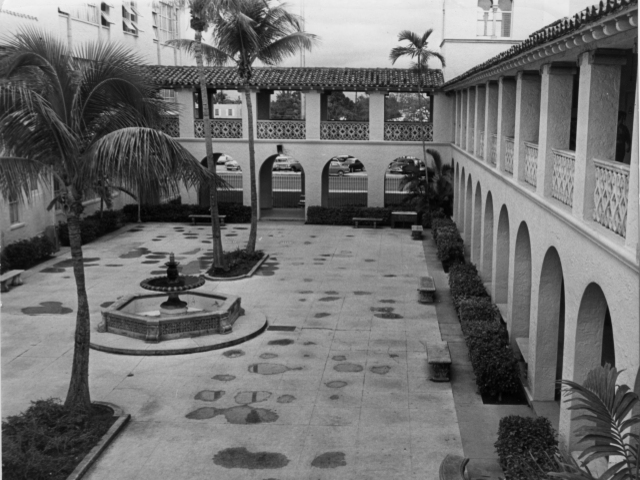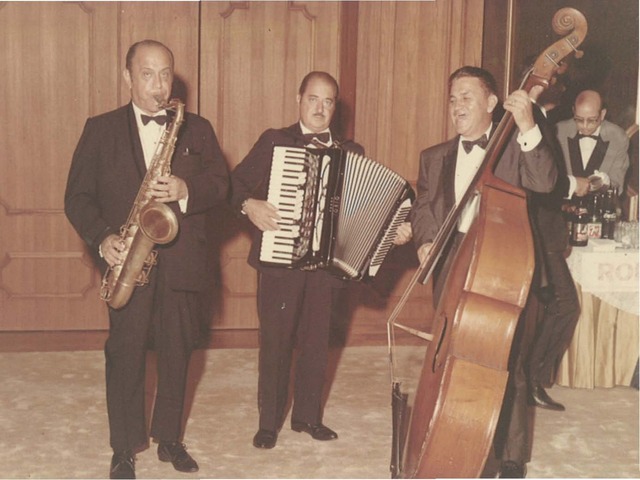I’m one of the rare ones – a pre-Boomer (1942) who was born and raised in “Myam-uh” (natives still pronounce it that way) and still lives in South Florida.
My parents, first generation Sicilian-Americans, were a founding family of St. Michael’s Catholic Church in the ’40s, which celebrated mass in Miami High’s cafeteria, and later in the Dade County Auditorium.
Ours was the fourth house built on Second Terrace and 43rd Avenue – behind the Miami Children’s Hospital. FPL bought the corner in the late ’50s, and the hospital buildings were donated to become St. Dominic’s Catholic Church on Northwest Seventh Street. My parents were asked to be a founding family there, as well.
Mom was a bookkeeper for the fabled Zissen’s Bowery nightclub on North Miami Avenue and 17th Street. A longtime Miami and tourist favorite – sawdust on the floor, insulting waiters, bowls of fresh roasted peanuts and big steins of beer. Everyone got into the act or went “to jail” until the rest of their party bailed them out or they sang a song.
Dad was the sales manager at Modern Beauty Supply along the FEC Railway, north of the Miami-Dade County Courthouse, and then later at Daisy Beauty Supply on Southwest Eighth Street. Later, they owned the Andalusia Beauty Salon in Coral Gables behind the Miracle Theatre.
Me? I was an entrepreneur.
At 10, I had my first shoeshine stand, at Carl’s Market on Flagler and 43rd Avenue. I charged 10¢ a shine and ladies were my biggest customers – “drop ‘em off going in, pick ‘em up on the way out.” By 11, I had five shoeshine stands – 15¢ a shine, four of them manned by others who kicked me a nickel for every shine they did. Trust me, they all paid up – did I mention I’m Sicilian? My personal location by then was the gas station on the northwest corner of Flagler and Le Jeune. Everyone pumped their own gas, a perfect target for the “Shine, Mister?” pitch and, of course, with shines at 15¢ and gas at 25¢ a gallon, the odds of getting flipped a quarter (“keep the change, kid”) were pretty good. You had to be fast and good. I was, and got flipped a lot of quarters.
I went to a series of schools, including St. Theresa’s for kindergarten, Gesu Catholic in 1st grade, Kinloch Park for grades 2 and 3, the legendary Miami Military Academy in Miami Shores for grades 4, 5, and 6 (there’s a story for another time), St Michael’s Catholic School for grade 7, and Kinloch Park Jr. High, grades 8 and 9. Because we lived in a “neutral zone” for high schools, I had several choices. I chose Miami High along with most of my friends from Kinloch. We graduated in the class of 1960. Ours was the last class of our era, with more than 200 attendees at our 50th reunion. GO STINGS ’60!
Depending on which crowd you ran with, you either hung out for lunch (or more) at Shirley’s on Flagler, or Campus Corner, a glorious park in front of Miami High, later turned into a parking lot. At night, you cruised Paley’s Big Wheel Drive-In on Southwest 32nd Avenue and Coral Way, or the Pizza Palace on “The Trail” at 30th Avenue. A hot date was to pile into Dennis Craig’s Olds 88 convertible with our current “steady girls” and head to the Le Jeune Drive-In theater to make out, while trying to sneak in a load of friends in the trunk.
By 11th grade, I dated a girl living on Key Biscayne. It was quite a feat to hitchhike from Flagler and Le Jeune to Fernwood Road on the Key for a date, but hey, teenage hormones can overcome any obstacle – unless she scored her dad’s car and made the trek to the mainland.
The ‘50s in Miami was the greatest time to be a teenager. WWII had just ended, we had a benevolent president in the White House, an economy that was rocking (not to mention rock ’n’ roll), and the most stress you had was an algebra test on Monday.
There was so much to do (yet we always complained, “There ain’t nuthin’ ta do ‘round here”). There was the Monkey Jungle, Parrot Jungle, Matheson Hammock, and the Crandon Park Zoo. Bill Haas milked King cobras at the Serpentarium, and at Coral Castle a Latvian immigrant built a monument to teenage angst. A trip to Homestead down U.S. 1 for key lime pie was an adventure, as the tires went clakity-clak over the rubber expansion strips between each section of the highway.
On the weekends, we had Police Athletic League (PAL) dances at Bayfront Park Auditorium with WQAM’s Rick Shaw or the Police Benevolent Association (PBA) Hall on Northwest 14th Street, where WINZ’s Jerry Wichner would spin.
We saw the Fontainebleau replace the old Firestone Estate at 41st and Collins, cruised Collins Avenue from Lincoln Road to 71st Street, sneaking into the Wreck Bar at the Castaways for great rock ‘n’ roll, and for great jazz to the Johnina Hotel or Play Lounge on 79th Street Causeway, ending at Wolfie’s at 21st Street on Miami Beach for baskets of rolls and coffee.
Sundays, you were on a blanket with your sweetie at Crandon Park or 41st Street on “The Beach,” and you “danced Latin” at the 21st Street Beach Pavilion, near the Seagull Hotel where “Sleepy Time Gal” broadcast till dawn on WKAT.
Yeah… ‘50s Myam-uh… Dem were da dayz!

